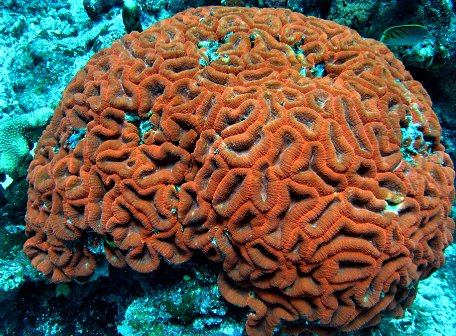
TROPICAL SYNAPSES
Reflections on topics including clinical neurology, recent publications in neuroscience,
philosophy of biology, "neuro-doubt" about modern media hype of new neuro-scientific procedures and methods, consciousness, scuba diving, horticulture, jazz, blues, slack key guitar music, the Hawai'i health scene, and whatever else dat's da kine...
Ono Recipe
Covid-19 Modeling for the Big Island
Extrapolations, anyone? Here are some of mine (see bottom for sources):
-----------------------------------------------------------------------------------------------
ABSTRACT
Forecasting the novel coronavirus COVID-19
Fotios Petropoulos ,Spyros Makridakis
Published: March 31, 2020https://doi.org/10.1371/journal.pone.0231236
Abstract
What will be the global impact of the novel coronavirus (COVID-19)? Answering this question requires accurate forecasting the spread of confirmed cases as well as analysis of the number of deaths and recoveries. Forecasting, however, requires ample historical data. At the same time, no prediction is certain as the future rarely repeats itself in the same way as the past. Moreover, forecasts are influenced by the reliability of the data, vested interests, and what variables are being predicted. Also, psychological factors play a significant role in how people perceive and react to the danger from the disease and the fear that it may affect them personally. This paper introduces an objective approach to predicting the continuation of the COVID-19 using a simple, but powerful method to do so. Assuming that the data used is reliable and that the future will continue to follow the past pattern of the disease, our forecasts suggest a continuing increase in the confirmed COVID-19 cases with sizable associated uncertainty. The risks are far from symmetric as underestimating its spread like a pandemic and not doing enough to contain it is much more severe than overspending and being over careful when it will not be needed. This paper describes the timeline of a live forecasting exercise with massive potential implications for planning and decision making and provides objective forecasts for the confirmed cases of COVID-19.
-----------------------------------------------------------------------------------------------
FOOTNOTE
The origin of the R0 of 0.1 in the curve above is based on the following analysis:
# Simplistic Julia extrapolation model to fit world data totals
using LsqFit
const K = 7_800_000_000 # approximate world population
const n0 = 27 # starting at day 0 with 27 Chinese cases
""" The model for logistic regression with a given r0 """
@. model(t, r) = (n0 * exp(r * t)) / (( 1 + n0 * (exp(r * t) - 1) / K))
# Source: https://ourworldindata.org/coronavirus#all-charts-preview
# Daily world totals, including China and all countries
ydata = [
27, 27, 27, 44, 44, 59, 59, 59, 59, 59, 59, 59, 59, 60, 60,
61, 61, 66, 83, 219, 239, 392, 534, 631, 897, 1350, 2023,
2820, 4587, 6067, 7823, 9826, 11946, 14554, 17372, 20615,
24522, 28273, 31491, 34933, 37552, 40540, 43105, 45177,
60328, 64543, 67103, 69265, 71332, 73327, 75191, 75723,
76719, 77804, 78812, 79339, 80132, 80995, 82101, 83365,
85203, 87024, 89068, 90664, 93077, 95316, 98172, 102133,
105824, 109695, 114232, 118610, 125497, 133852, 143227,
151367, 167418, 180096, 194836, 213150, 242364, 271106,
305117, 338133, 377918, 416845, 468049, 527767, 591704,
656866, 715353, 777796, 851308, 928436, 1000249, 1082054,
1174652,
]
# The initial data is for 97 days starting with day 0 = 31 December 2019
tdata = collect(LinRange(0.0, 96, 97))
# starting approximation for r of 1/2
rparam = [0.5]
fit = curve_fit(model, tdata, ydata, rparam)
# Our answer for r given the world data and simplistic model
r = fit.param
println("The logistic r for the world data is: ", r)
println("The confidence interval at 5% significance is: ",
confidence_interval(fit, 0.05))
println("Since R0 is about exp(G * r), and G is about 12, R0 ≈ ", exp(12r[1]))
# Output:
# The logistic r for the world data is: [0.11230217572265622]
# The confidence interval at 5% significance is: [(0.11199074156706985, 0.11261360987824258)]
# Since R0 is about exp(G * r), and G is about 12, R0 ≈ 3.8482792820761063
Risks for impaired post-stroke cognitive function
In a printed posted to the medRxiv preprint archive this month, I found a chart review of patients with stroke to determine factors (other t...

-
According to the Nobel-prize-winning work in the 1960's by Sperry and Gazzaniga , after the two cerebral hemisphere are cut by callos...
-
The Ship of Theseus is a classic thought experiment in Greek philosophy. As related by Plutarch the historian, Theseus' ship was kept as...
-
Sanboukan sweet lemon citrus tree grafts after a month, unwrapped today. The first graft looks more solidly healed than the second. We wi...




